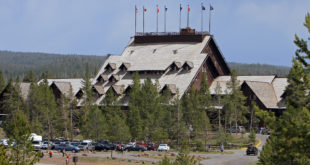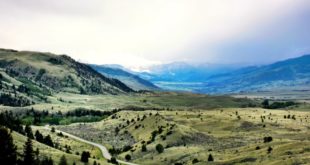Sylvan Pass, shown below, is a special case for winter travel. Nestled in the Absaroka Mountains, the road through the pass is in the bull’s-eye for twelve “avalanche chutes,” sweeping steep slopes that harbor unstable snow, which frequently and without warning breaks loose. Snowmobiles and snowcoaches using the road to access the park may be in considerable danger at certain times during the winter. Historically the park service has used cannons and dynamite to artificially start avalanches to remove the danger, but the procedures themselves are dangerous for park employees — and expensive. It’s been estimated that the expense for the coming year will be up to $4,000,000 (approximately $3.6 million for start-up costs this year and $456,000 in estimated yearly maintenance costs). In 2007, 463 people used this route into Yellowstone, which just for the yearly maintenance works out to about $1,000 per person.

Of course, the city of Cody and the many resorts located between Cody and the take-off point for the East Entrance believe that keeping the pass open will make it possible to launch more aggressive marketing campaigns and significantly increase the number of people traveling into Yellowstone from this direction.
The park service, however, is hedging its exposure. In the amended agreement, the language is full of conditions: “…subject to weather, safety, equipment, and fiscal constraints.” Fully translated, this means that severe storms will close the pass. It will be opened if and only if it is safe. That will happen only if the appropriate equipment is available and in working condition. None of this will happen if the park service doesn’t have enough money. The park service budget is always stretched, which was the main reason the East Entrance winter access was scheduled to end in 2007.
The “Sylvan Pass Controversy” is another illustration of the tug and pull between the desire to maintain access for the public to the spectacle of Yellowstone Park, the need to protect its animals, natural features, and its visitors, and the cost of it all. This is just one instance of the larger issue of winter access to the park via snowmobiles and snowcoaches, a subject which has been beaten into the snowpack for almost two decades.
 Yellowstone Insider Your Complete Guide to America's First National Park
Yellowstone Insider Your Complete Guide to America's First National Park





